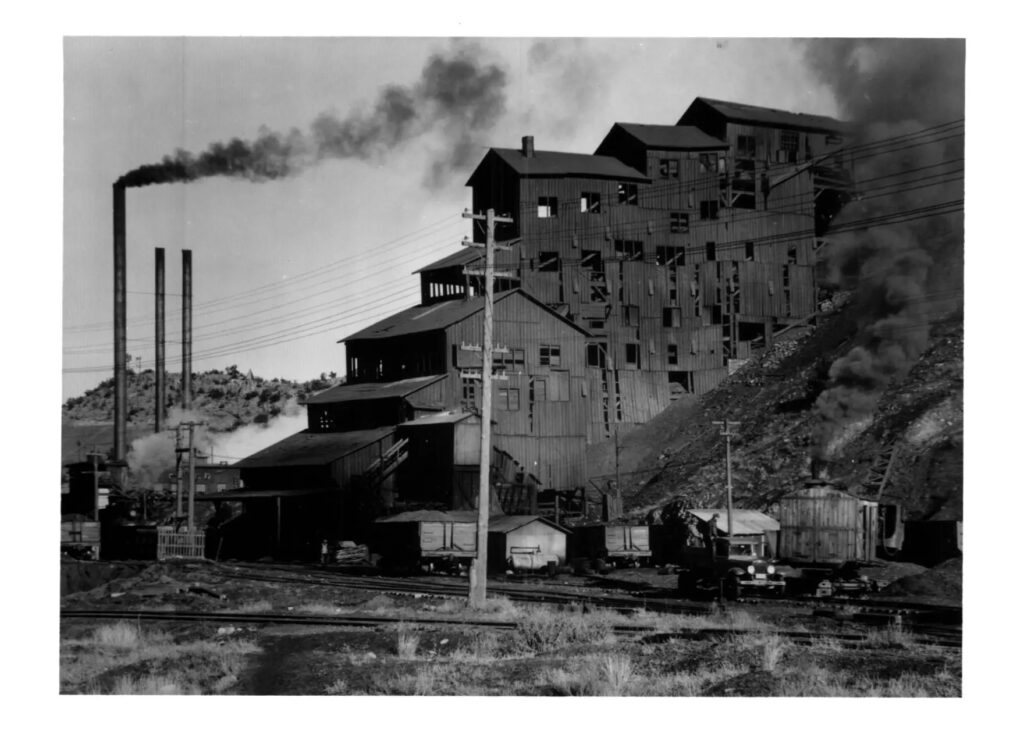Coal mining operation based in Madrid, New Mexico in the 1930s. (Photo courtesy of the Energy, Minerals, and Natural Resources Department)
Across New Mexico, there are over 15,000 areas where abandoned coal mining equipment, facilities, and legacy mine shafts continue to pose serious health, safety, and environmental hazards to rural and urban communities.
Now, over $2.4-million-dollars is on its way to help tackle some of these dangerous and often polluting abandoned mine lands.
Before the passage of the Surface Mining Control and Reclamation Act in 1977, mines remained largely unregulated – with companies often just walking away from hazardous waste and shafts hundreds of feet deep.
The centuries-old practice has left a mess for state agencies.
“We truly don’t know how many mines are out there,” said Mike Tompson, the program manager of the New Mexico Abandoned Mine Land Program.
Tompson said this money is a game changer to address piles of coal waste called “gob” and underground coal fires that, in some cases, burn for hundreds of years.
Coal fires are currently burning in Gallup, Raton, and La Plata – an area north of Farmington.
The recent decision to regulate mines in the past 46 years has also allowed the state to “tax” a given amount of material taken from surface and underground mines and use that cash to clean up mines left behind from the 19th and 20th centuries.
Though, as electricity utilities move away from coal, the practice has been in a steady decline for years. And, along with it, the money the state uses to tidy up mine waste.
The recent cash allocation from the Bipartisan Infrastructure Law is based on historical coal production. By the numbers, that leaves New Mexico as one of the least-funded in the entire country.
However, Tomson said this specific money cannot be used for cleaning up so-called “hardrock” mining projects such as gold, lead, copper, silver, and uranium.
That, Tomson said, is where New Mexico needs the most help.
“We really need this hardrock money in the future,” Tomson said. “There is momentum building in Congress to go towards funding that, and the stars kind of have to align for money to be available.”
There is some money floating out in the legislative ether, but Congress has yet to appropriate it.
Back in 2021, U.S. Sen . Martin Heinrich (D-Albuquerque) championed the Hardrock Mining Reclamation Fund which allows Congress to use up to $3 billion on hardrock cleaning efforts in all 50 states. But, since the legislation was signed into law, lawmakers have been very frugal with nationwide allocations. They have ranged from hundreds of thousands of dollars to $1 million.
The Abandoned Mine Land Program estimates that in New Mexico alone, the sticker price for all hardrock cleanup will ring in somewhere above $100 million.
In total, the Biden administration is pumping out $16 billion to address legacy pollution through the Bipartisan Infrastructure Law. Nearly $11.3 billion of that will go to abandoned mine lands over 15 years.
According to the Office of Surface Mining Reclamation and Enforcement, this funding is expected to address all inventoried abandoned coal mine lands in the nation. It is unclear how long this will take.
Thanks to a state bill passed in 2022, some steps are underway to tackle legacy hardrock mines, but only for uranium cleanup.
That legislation led the New Mexico Environment Department to hire two uranium mine reclamation coordinators. The Energy, Minerals, and Natural Resources Department has since hired one person in the Abandoned Mine Land Program.
There are an estimated around 1,100 uranium mine and mill sites in New Mexico.
This article first appeared at KUNM News. It is republished here with permission.

